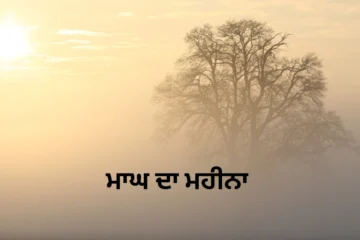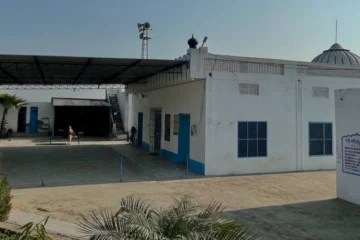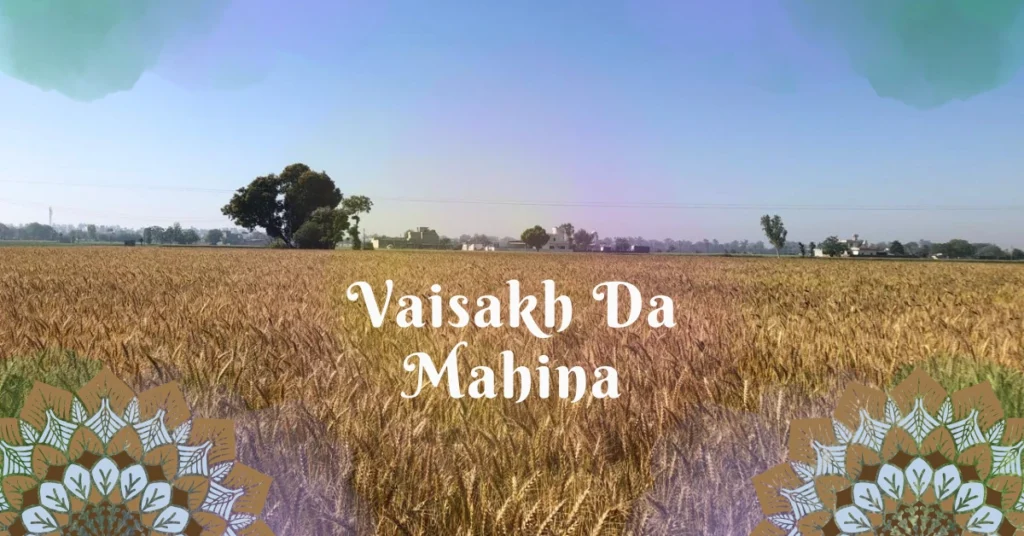
Vaisakh Da Mahina, also known as the month of Vaisakh, holds deep spiritual and cultural significance in India, particularly in Punjab and among Sikh and Hindu communities. This month, usually falling between April and May, marks the beginning of the harvest season, symbolizing prosperity, devotion, and renewal.
It is a time when farmers rejoice over their hard work, devotees engage in religious observances, and communities come together in celebration. The importance of Vaisakh extends beyond agriculture; it also has deep-rooted connections with historical and religious events that shape traditions even today.
In this article, we will explore the origins, significance, and key observances of Vaisakh Da Mahina, highlighting why this period is considered sacred by many.
The Origins of Vaisakh Da Mahina
The name “Vaisakh” is derived from the Sanskrit word “Vaishakha,” which is one of the twelve months in the traditional Hindu lunar calendar. The month is associated with the full moon (Purnima) and plays a crucial role in Hindu and Sikh traditions. It marks the transition from spring to summer and is closely linked to agricultural activities, making it a period of great joy and festivity for farmers.
In ancient scriptures, Vaisakh is described as a time when the earth is at its most fertile, and the fields are ripe for harvesting. The significance of this month can also be traced back to religious texts that highlight its importance for spiritual cleansing and devotion. Many mythological stories refer to Vaisakh as a time when divine events took place, further elevating its status among devotees.
Vaisakh in Sikhism
Vaisakhi: The Birth of Khalsa
For Sikhs, Vaisakh holds immense importance as it marks the festival of Vaisakhi, celebrated on April 13th. This day commemorates the establishment of the Khalsa Panth by Shri Guru Gobind Singh Ji in 1699. The formation of the Khalsa was a significant event in Sikh history, reinforcing the values of courage, equality, and service. Shri Guru Gobind Singh Ji initiated the first five Khalsa by giving them Amrit (holy nectar), setting the foundation of the Sikh brotherhood.
Vaisakhi is not only a religious event but also a time of great cultural celebration. Sikhs gather at gurdwaras to offer prayers, listen to kirtans, and participate in religious discourses. Nagar Kirtans (processions) are carried out, where devotees sing hymns and display martial arts performances known as Gatka.
Religious Practices and Celebrations
During this month, Sikhs visit gurdwaras, take part in community service (Seva), and recite the Guru Granth Sahib. Many Sikhs also take Amrit (baptism) during Vaisakh, dedicating themselves to the path of Sikhism. The spirit of giving is strong during this period, and Langars (free community kitchens) are set up to provide meals to thousands of people regardless of their background or religion. Vaisakh is thus a time of reflection, devotion, and community service in Sikhism.
Vaisakhi Celebration at Village Raowal
Like every year, Vaisakhi is celebrated with great enthusiasm in the village of Raowal. Vaisakhi celebrations are held in the Gurudwara Sahib and the Sangat of village Raowal attends the Gurudwara Sahib. Apart from this, Vaisakhi is also celebrated in villages adjacent to village Raowal, such as Gurudwara Jhiri Sahib, village Sowaddi Kalan, Gurudwara Nanaksar Kaleran etc. From village Raowal Sangat goes to see the Vaisakhi fair in tractor trolleys.
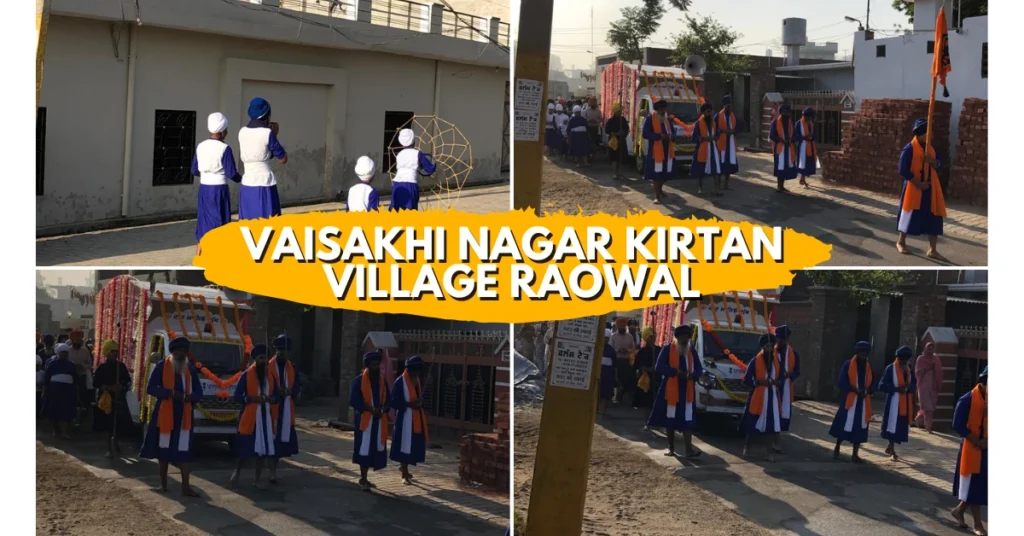
Vaisakhi Celebrations Across India
Vaisakhi is celebrated with great enthusiasm across different regions of India. In Punjab, it is the most prominent festival, marked by grand processions and cultural performances. The Golden Temple in Amritsar witnesses a huge gathering of devotees who offer prayers and participate in religious ceremonies. In other states like Haryana and Himachal Pradesh, Vaisakhi is also observed with fairs and festivities.
In West Bengal, Vaisakhi coincides with the Bengali New Year, known as Pohela Boishakh, which is celebrated with music, dance, and feasting. Similarly, in Assam, the festival aligns with Bohag Bihu, the Assamese New Year, which includes traditional games, dances, and community feasts.
Vaisakh in Hinduism
Auspicious Time for Worship and Charity
In Hinduism, Vaisakh is considered one of the holiest months for performing religious rituals, charity, and devotion. Many Hindus wake up early in the morning to take a sacred dip in rivers like the Ganges, believing that it purifies the soul and washes away sins.
Taking a bath before sunrise and offering prayers to the Sun God (Surya) is considered highly auspicious. It is also believed that those who observe fasts and practice penance during this month attain spiritual growth and divine blessings.
The Puranas mention that acts of charity and feeding the poor during Vaisakh bring immense blessings. Many people donate food, clothing, and other essentials to those in need, reinforcing the values of compassion and generosity. It is also common for temples to organize special prayers and free meal services for the underprivileged.
Vaisakhi Celebrations Abroad
Vaisakhi is a major celebration among the Punjabi diaspora around the world, especially in countries with significant Sikh and Punjabi communities, such as the United Kingdom, Canada, the United States, and Australia. Here’s a look at how Vaisakhi is celebrated abroad:
1. Canada:
Vancouver: The Vaisakhi Parade in Vancouver is one of the largest celebrations outside of India. Thousands of people participate in the parade, which includes floats, music, dance, and religious processions. It is a time for the Sikh community to come together, pay respects at Gurdwaras, and celebrate both the harvest and the formation of the Khalsa.

Toronto: The Vaisakhi celebrations in Toronto feature grand processions, traditional performances like Bhangra and Gidda, and visits to Gurdwaras. It’s a vibrant event that attracts people from all backgrounds to experience Sikh culture.
Montreal: The city also hosts community events, Gurudawara visits, and festivals to mark Vaisakhi. Special prayers and processions are organized, with a focus on spirituality, community service, and cultural pride.
2. United Kingdom:
London: The Vaisakhi Nagar Kirtan (procession) in London is a major event, beginning at Gurdwara Sri Guru Singh Sabha and making its way through the streets of Southall and surrounding areas. The procession features floats, singers, and dancers, while people distribute free food (langar) to celebrate the spirit of sharing.
Birmingham: The Vaisakhi celebrations in Birmingham also include processions, prayer services, and cultural performances. People come together to celebrate both the harvest and the spiritual significance of the day.
3. United States:
New York: In New York, especially in areas like Richmond Hill, the Sikh community celebrates Vaisakhi with vibrant processions, prayers, and cultural performances. Gurdwaras host special events, and many people participate in community service activities like blood drives and food distribution.
California: In areas like Yuba City, the Vaisakhi celebrations attract large crowds with parades, exhibitions, and religious services. The region hosts one of the largest Vaisakhi festivals in the U.S., with cultural activities and religious prayers drawing people from across the country.
California (Sacramento): The Sikh community in Sacramento also hosts large Vaisakhi festivals with music, dance, and food. The city’s Gurdwaras become focal points for the celebrations, with special prayers and community services.
4. Australia:
Sydney: Vaisakhi celebrations in Sydney are marked by processions, prayers at Gurdwaras, and various cultural performances. Sydney’s Sikh community celebrates the festival with food distribution, traditional dances like Bhangra, and musical performances.
Melbourne: In Melbourne, Vaisakhi is celebrated with a combination of traditional and contemporary events, including processions, community gatherings, and cultural shows. The event is often highlighted by religious services and sharing meals with the less fortunate.
5. Malaysia:
Kuala Lumpur: Vaisakhi celebrations in Malaysia are more religious in nature but are accompanied by vibrant processions, prayers at Gurdwaras, and community events. The Sikh community in Malaysia commemorates the day by hosting kirtans, langar services, and visiting historical Gurdwaras.
6. Other Countries:
Singapore: The Vaisakhi celebration in Singapore includes Gurdwara prayers, langar service, and traditional dances. Many in the Sikh community celebrate with their families and community members, paying homage to the spiritual significance of the day.
Dubai: While smaller in scale compared to other countries, the Sikh community in Dubai celebrates Vaisakhi with prayers and community activities at local Gurdwaras. Some participate in cultural programs that showcase Punjabi music, dance, and food.
Common Themes in Vaisakhi Celebrations Abroad:
- Religious Observance: People visit Gurdwaras for special prayers and Kirtan (sacred hymns).
- Community and Service: Vaisakhi is a time for giving, with many Sikhs engaging in charitable work like organizing langar (free community meals) for those in need.
- Cultural Celebrations: Bhangra, Gidda, and other Punjabi folk dances and music are performed, showcasing the vibrant cultural heritage of Punjab.
- Parades/Processions: Vaisakhi parades or Nagar Kirtans are common in cities with large Sikh populations, often featuring decorated floats and traditional performances.
- Food and Sharing: The sharing of food, particularly the langar (free community kitchen service), is central to Vaisakhi celebrations. It symbolizes the Sikh principles of equality and service to humanity.
Vaisakhi celebrations abroad are a blend of religious devotion, cultural pride, and community engagement, making it an important event for the global Sikh and Punjabi communities.
The Agricultural Significance of Vaisakh
Harvesting Season and Farmers’ Joy
Vaisakh is a crucial time for farmers as it marks the harvesting of Rabi crops such as wheat, barley, and mustard. The fields turn golden, symbolizing prosperity and abundance. Farmers celebrate their hard work through songs, dances, and fairs, expressing gratitude to nature for a bountiful harvest. It is a time when the fruits of labour are enjoyed, and prayers are offered for future prosperity.
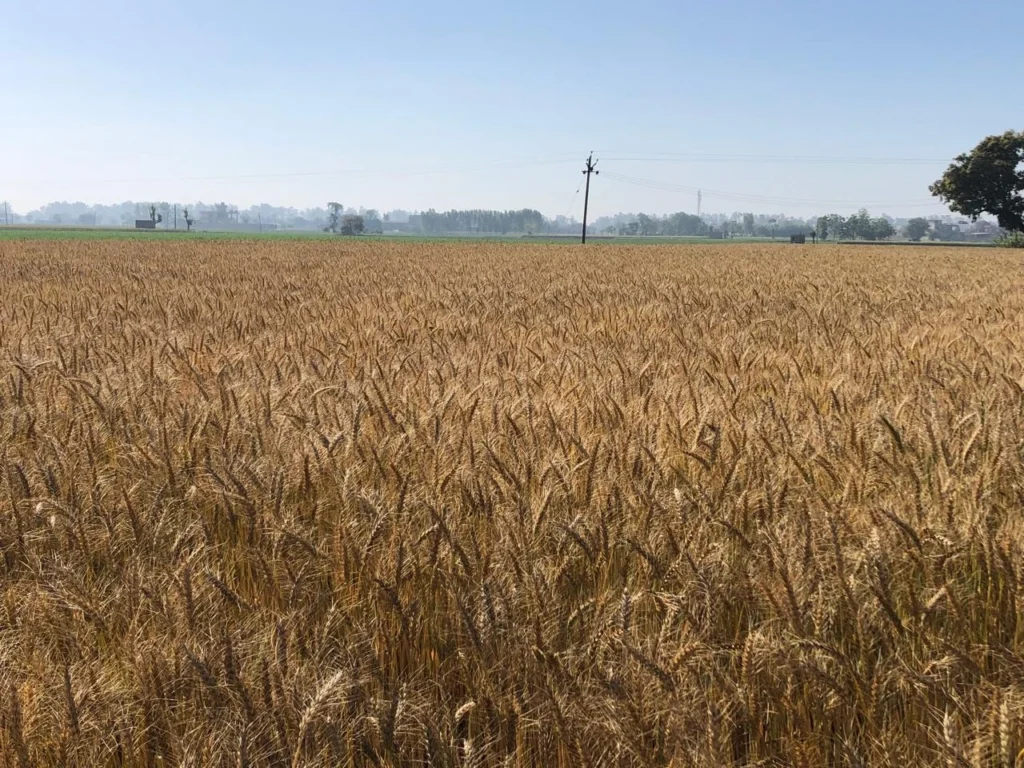
Vaisakhi Mela
Although Lohri marks the beginning of the harvest season in January, Vaisakhi is the final celebration of a successful yield. Large fairs (melas) are organized in villages and towns, where people participate in traditional dances like Bhangra and Giddha, enjoy folk music, and share festive meals. These fairs also feature stalls selling handicrafts, agricultural tools, and traditional delicacies, making them a major attraction.
Renewal and Spiritual Growth in Vaisakh
A Time for Reflection and Growth
Apart from its religious and agricultural significance, Vaisakh is also seen as a period of personal and spiritual renewal. Many people take resolutions to lead a more disciplined and righteous life. Meditation, yoga, and fasting are common practices during this time, allowing individuals to cleanse their body and mind. Pilgrimages to holy sites and participation in religious discourses are encouraged for those seeking spiritual enlightenment.
Community Bonding and Festivities
The spirit of Vaisakh is about unity and togetherness. Families come together to celebrate, and communities organize charitable activities, such as free food distribution (Langars) in gurdwaras and temples. These acts of kindness reinforce the values of compassion and selflessness. The month serves as a reminder of the importance of sharing, caring, and upholding cultural traditions.
Conclusion
Vaisakh Da Mahina is a month of immense significance, encompassing devotion, gratitude, and joy. Whether through religious observances, agricultural celebrations, or acts of kindness, this period fosters a deep connection between individuals, their faith, and nature.
It serves as a reminder of the cycle of life, the rewards of hard work, and the importance of spirituality in everyday life. As Vaisakh arrives each year, it brings with it a renewed sense of hope, prosperity, and devotion, making it a truly special time for millions across the world.
Read More
https://raowal.com/vaisakhi-celebrating-unity-harvest-and-culture/
FAQs: Vaisakh Da Mahina
1. Why is Vaisakh considered an important month?
Vaisakh is important because it marks the harvest season, significant religious festivals, and a time of spiritual renewal. It is celebrated by Hindus and Sikhs with devotion and joy.
2. What are the major festivals celebrated during Vaisakh?
Key festivals include Vaisakhi, Akshaya Tritiya, and Ram Navami. These events hold religious and cultural importance in Hinduism and Sikhism.
3. How do Sikhs celebrate Vaisakhi?
Sikhs celebrate Vaisakhi with Nagar Kirtans, visits to gurdwaras, and large community gatherings. It is also a time when many take Amrit and reaffirm their faith.
4. What is the significance of charity during Vaisakh?
Charity is believed to bring immense blessings during Vaisakh. Donating food, money, or essentials to the needy is a common practice, emphasizing compassion and generosity.
5. How is Vaisakh connected to agriculture?
Vaisakh is the time when farmers harvest their Rabi crops. It is a season of prosperity and joy, marked by fairs, dances, and celebrations to honor the fruits of hard work.
